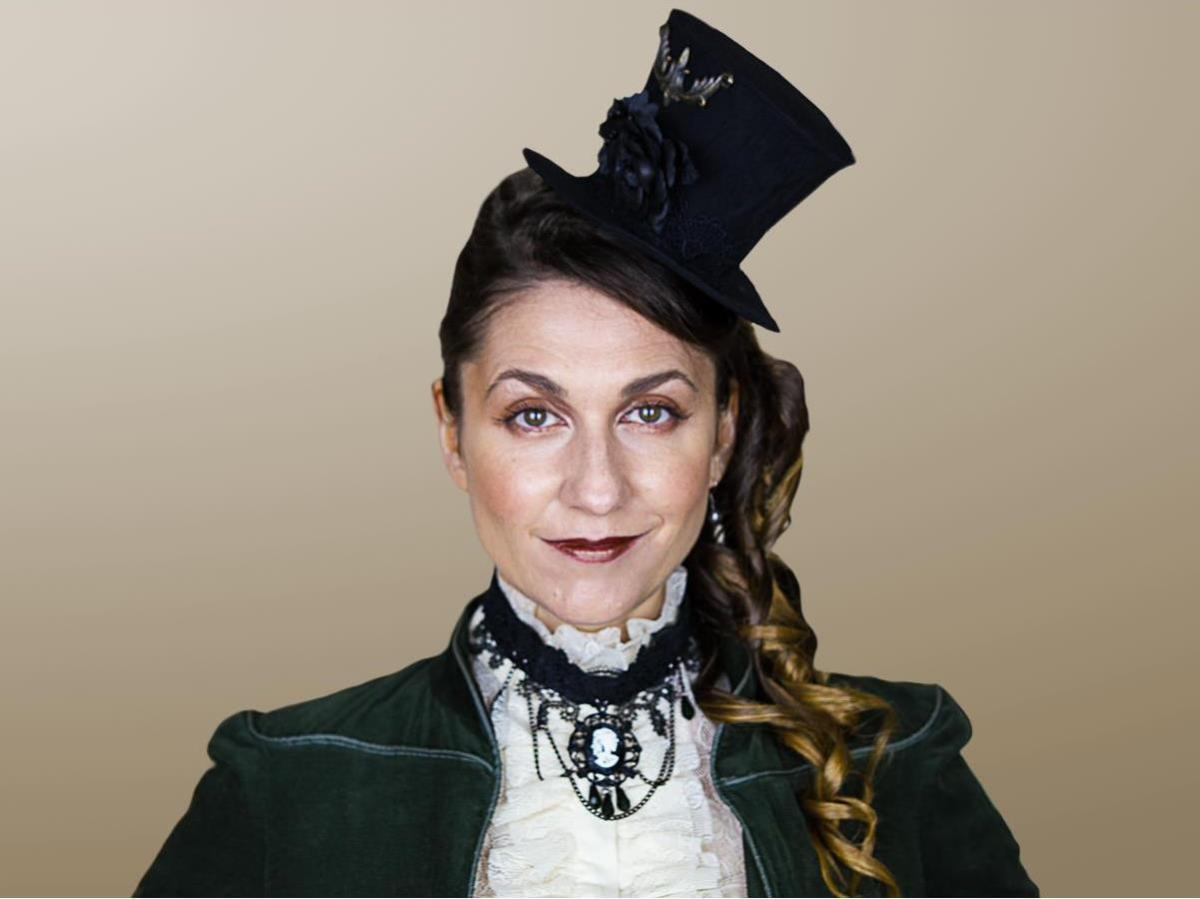Image: melbournefringe.com.au
Stepping across the threshold into the close confines of the Meeting Room, we have arrived by chalkboard in October 1890 / London / Present Day.
With a burst of magical light our narrator boulders out from the shadows in forest green frock coat, understated ruffle shirt and lightly chromed pantaloons, eager to greet her audience. Channeling her inner child through the mind of one stuck in the stacks of industrial progress, our narrator evinces the Artful Dodger as much as Dora the Explorer, giving a performance like something out of the Victorian-era under nines’ cotton mill talent show.
Possessing an imagination that extends far beyond the smallness of her stage, in Mary Weather’s Monsters Rama Nicholas pulls fact, fiction and psychoanalysis into the weave of a complex and compelling adventure story. Making out of Mary Shelley, first lady of gothic horror, a ruthless, monster-hunting alter-ego à la Van Helsing or Buffy Summers, we follow Mary Weather, Lord Protector of London, leading the charge in a war between worlds.
Playing the whole crowded coterie of characters and cameos, with silver tongue and fine-tuned physicality Nicholas expertly illuminates each member of a dynamic cast: our frolicsome narrator, our hero Mary Weathers, and her insufferably Romantic suitor, Percy Shelley; Bubbaluga, Mary’s beastly kidnapper and companion; her judge, her jury and adoring public; and her League of Literary Gentlemen, those giants of the genre Lord Byron and Bram Stoker, recast as members of Ms Weather’s Hunters’ Club.
Unfolding a map of references scattered across the nineteenth century, the more literary minded among the audience will note the incongruence of our context, the deciphering of which leads us into darker territory than the Monsters’ Realm. Set in 1890, the action falls well outside the lifespan of Mary Shelley, who published Frankenstein in 1818 and died in 1851; neither does the revelation of Mary Weather’s tragic past subscribe to such strictures of fact – transdimensional gateways aside.
And so the trail of breadcrumbs leads us not to Shelley but to the child at the heart of the story, living at the beginning of an Industrial Revolution, and fleeing, by fantasy, its monstrous consequences on their livelihood, their environment and their society.
Given the broad scope of her narrative, it was a shame that our narrator should have tried to focus our reading of the whole through the romance between Mary and a monster, to which they call attention at the very conclusion of her performance; thereby underestimating both our capacity for inference and the value of ambiguity and multivalence, which has otherwise been so cleverly managed.
As the narrator explains, ‘some dreams are sweet and sentimental; some dreams are trippy and weird; and there are some dreams that reveal secrets, shame and regret’. Happily, Rama Nicholas presents us with a brilliant blend of all three. Left open to interpretation, Mary Weather’s Monsters proves as potent as the great works of literature it simultaneously rectifies and roasts.
Rating: 4 stars out of 5
Rama Nicholas in Mary Weathers’ Monsters
Performed by Rama Nicholas
Directed by Adam McKenzie
Music by Rob Kidd
Melbourne Fringe Festival
Meeting Room, North Melbourne Town Hall (Arts House)
18 September – 3 October 2015





